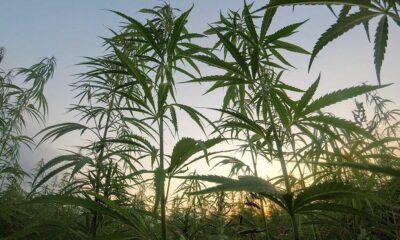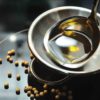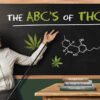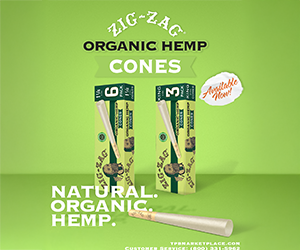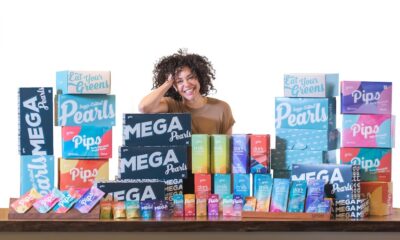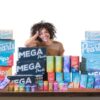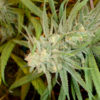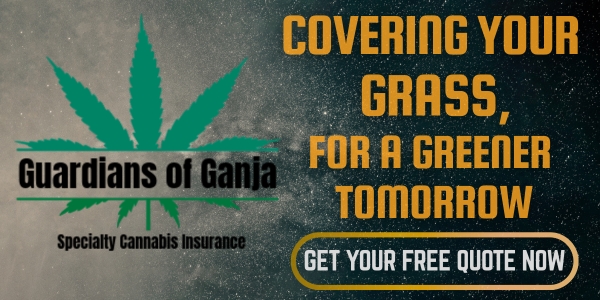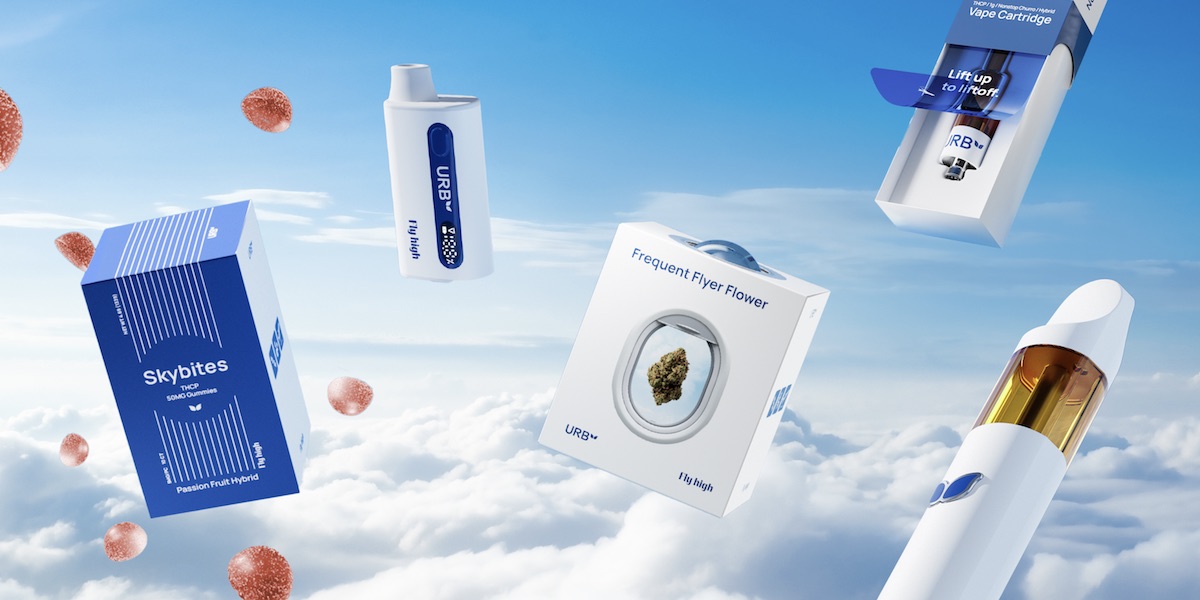
Q&A
Flying High With Lifted Made CEO & Founder Nick Warrender
The new rebrand of URB is a testament to the brand’s dedication to elevating the industry and setting a higher standard.
While URB is considered one of the top 10 cannabinoid brands in the US, the company is making moves to not only change with the times but to lead others into the future.
“Everything that we’re trying to do is to continue to legitimize the industry. It’s a big risk when you have a brand that is successful and has done well for a lot of years. But we’re focused on doing the right thing, time and time again,” says Nick Warrender, CEO and Founder of Lifted Made, the company behind URB.
This relentless pursuit of “doing the right thing,” especially when operating in a new, somewhat lawless industry, is what’s guided the company’s journey from a small vape additive startup in 2013 to a $57 million brand by 2022.
We recently sat down with Warrender to learn more about their business model, and more specifically about the rebrand of Lifted Made’s national hemp-derived cannabinoid brand, URB.

Cannabis Now: How did you end up being the CEO and Founder of Lifted Made?
Nick Warrender: Lifted started with me, a little bit of money, a little 10×10 room at a warehouse that my parents owned. We thought that these were products that could really change a lot of people’s lives. So, we started small, got into one retail store, did a little pop up. They sold out, got great reviews and we kind of rinsed and repeat. But yeah, it was a very small start to this business, and it was through a passion of really trying to help as many people as we could.
CN: And what was that first product in that 10X10? What were you putting into that little retail shop?
NW: Our first CBD product was a 2mL nano vape additive. At that time, the vape industry was really blowing up. And we said, well, how can we come up with a product that’s really easy for people to use, that they can kind of add to what they’re used to, but that’ll also be effective? It was just a little 2ml CBD additive for vape products that was like five bucks. It was low entry at that point—CBD was kind of just getting off the ground, and it was very expensive, and we wanted people to be able to try it and see how the effects were.
CN: And where were you sourcing that?
NW: At that time [2014], it was coming from a small lab in Colorado. It was very hard to find CBD isolate. It was extremely expensive, but we found some good people that, again, were in it for the right reasons. And we were able to buy it, a couple grams at a time to start. So, yeah, it was relationship-based. We were able to find some hemp cultivators that were taking it down into isolate, and we were working on it from there.
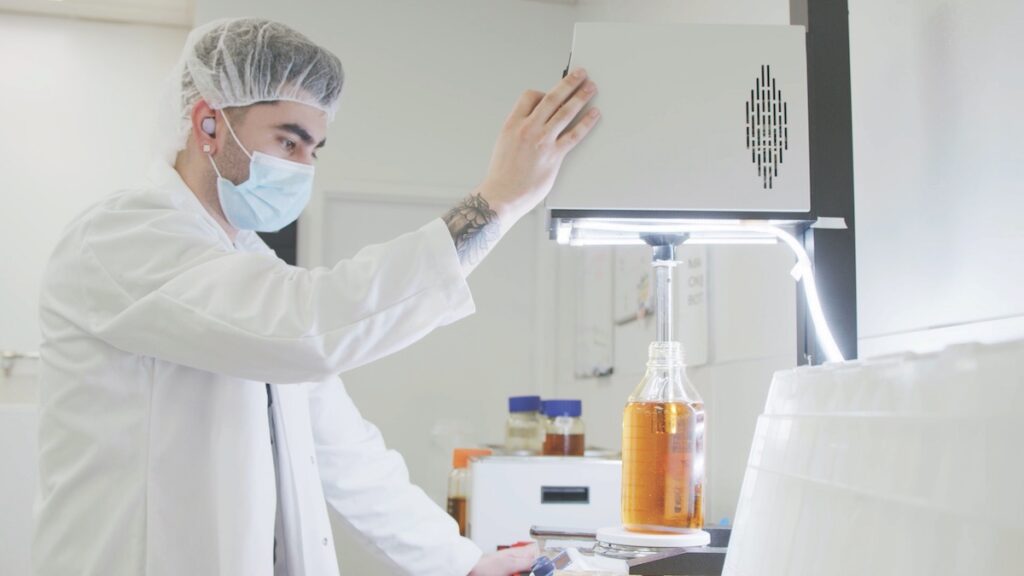
CN: Awesome. And here we are today. So how can I understand the two entities, URB and Lifted Made?
NW: So URB is owned by a small, publicly-traded company called LFTD Partners. We’re traded on the OTC under the ticker symbol LIFD. We went public in 2020, we’re a wholly owned subsidiary. The manufacturing subsidiary is called Lifted Made. We’re based out of Kenosha, Wisconsin. We’ve got three facilities here of about 50,000 square-feet in total, and one facility in Durango, Colorado. We’re at about 175 employees or so. We do all of our own manufacturing in house. It’s really important for us to control the supply chain, so we’ve invested a substantial amount of our time and efforts and money into building out infrastructure here in Kenosha.
CN: Does URB currently only sell hemp-derived cannabinoids? And what is the scope of that business? How can I get a sense for how big is this brand? How are you national? How many SKUs do you have? Are there any revenue targets you’re trying to hit?
NW: Yeah, I can speak on some historicals. We grew from 2020 to present, or at least over the first three years of the acquisition, from $5 million to $37 million to $57 million. We were extremely early on and pretty much all novel cannabinoids, which put us on the map at a national level. There have been periods of time where people have considered us the number one brand in the country, but there’s definitely like a top 10 list, and I think we fall under that. For us, purity is of utmost importance. We’re never going to be the cheapest brand, but we try to make affordable products for consumers and also make sure that we create good business-to-business relationships. We have over 100 SKUs currently, and we’ve been developing a rebrand over the last 8-9 months to just kind of elevate not only URB, but to elevate the industry and set a precedent for what we believe regulations should look like. Product testing, purity, traceability—those are all things that are really important to us.
CN: Okay, from the small little office where you’re making vapes to almost 60 million in revenue, when did you have the aha moment of, “Oh, this isn’t some small CBD brand. This is a potentially global cannabinoid brand.”
NW: I think it was really in 2020-2021 where we started building out and really bringing in professionals, people that had a lot of experience, people that understood the industry. But we were never really driven by a top line revenue. For us, it was how do we do better every day? And how do we increase the quality of the products? We felt if we do the right thing, the money will always come.
Our North Star is doing the right thing in an industry that doesn’t have a lot of guidelines, and creating those guidelines for ourselves inside the company, and trying to make those a standard in the industry. I feel we’ve done this to a degree right when I first entered this market. There was no testing—definitely no full panel testing. So to see some of these things become a standard from buyers has been great. So, we’re just continuing to push forward in legitimizing the industry.
CN: Was there ever a point where you or the team thought about getting into the state-regulated industry?
NW: It’s definitely something that we’ve looked at for several years. Obviously, as a public company, plant-touching is an issue if you want to get up listed to a larger exchange here in the United States. It’s something that we’re interested in getting more involved in, but we realize they’re two very different markets. They’re two very different distribution models. So, to think “Hey, we could just copy and paste what we’re doing in the license space,” we understand that that’s not the case. So, we move conservatively. And again, we want to move slow to the point where we’re doing things the right way.
CN: Of course. Do you think that these two industries are going to come together at some point in the future, or will one cannibalize the other? What’s the crystal ball say?
NW: I think there is a world in which all cannabinoids can work together. I think that there are people that don’t like standard THC; there are people that look for extremely strong products; there are people that look for mild products. I think the hemp industry is kind of bridging that gap to create a wider offering to consumers and also kind of redefine cannabis, in a sense, from a stigma that a lot of people have had about THC in general, and bring that education that there’s a lot more than just THC when it comes to cannabis.
From a regulatory standpoint, I have no idea what the federal government’s going to do. A lot of people have been talking about legalization, whether it’s a year out or five years or 10 years out, but I do believe that if and when that day comes, the kind of traditional distribution channels and retail that has built tobacco vape and now hemp would be great outlets to create more touch points for consumers. And I think that it would create a lot more efficiencies for the cannabis industry to be able to have centralized manufacturing and distribution hubs to service multiple states.
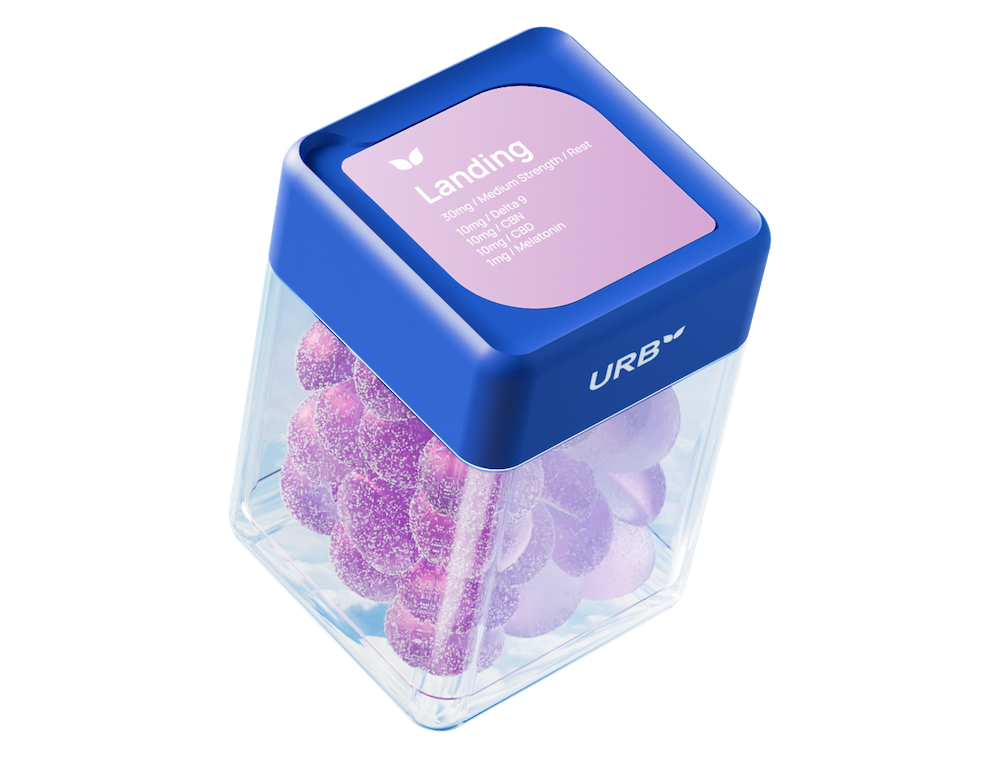
CN: You mentioned earlier about a rebrand. One of the things that caught my eye at the CHAMPS Trade Show was your pretty unbelievable activation of URB and the airline concept. Normalization, I think, is a really important part of this industry and your brand identity in this campaign is about as sharp and normalizing as it gets, almost to a fault, where you could look at it and be like, “Wait is that a new airline?” How did you guys develop that concept, and how fresh of a brand launch is this?
NW: Yeah, so URB has been a very long-standing brand in the industry. Our forte has always been quality, and part of displaying quality has been through branding and packaging. I think as the industry has evolved and matured, there hasn’t been a lot of brand identity that’s come from that. So, we wanted to go back to the drawing board and say, “Look, we’ve got a very well-established brand. People trust us, but how do we continue to differentiate? How do we continue to raise the bar for us?” Progress is everything.
We also wanted to be responsible on how products are packaged. We wanted to go towards something that felt a little more adult-use. Rather than just selling cannabis, part of it is selling an experience, and part of it is creating a brand. So from our perspective, we’ve kind of moved our thought process of, “We’re a hemp or a cannabis company to we’re a CPG company that just so happens to work within cannabis and cannabinoids.” In doing so, we wanted to pick a really specific theme that created tight guard rails on how we display the brand, how we market the brand, and how we can create a tone of voice so that people know it’s us, regardless of what they see or hear—whether it’s a radio ad or an ad on social media.
CN: There’s a lot of restrictions on how you can market cannabinoids, whether it’s hemp or cannabis. How do you reach consumers? Like, is it word of mouth? What’s the best tactic? How are you guys creating a national presence for yourselves?
NW: A big part of our recognition over the years has been that we’ve been first to market in a lot of things, right? We were one of the first brands to launch true compliant Delta-8 products. We were the first brand to launch a compliant Delta-9 only edible product. We were the first to launch a hydro-extracted live resin vape product that created a lot of PR. Those were topics that were extremely interesting for a lot of huge outlets. I think that created a lot of buzz over the years for us, and then it has been a lot of word of mouth. It has been a lot of our kind of boots on the ground, guerrilla marketing and sales approach to open up new regions and solidify the brand in new regions.
Coming back to this rebrand—this theme—allows us to market who we are without necessarily marketing specific products. We see a lot more opportunities for traditional marketing with our rebrand than I think with some of our previous branding and products. Our goal is to create a buzz that’s kind of across all medias moving forward.

CN: You have, what, hundreds of SKUs? What’s the most popular?
NW: Vapes is number one. Edibles, number two.
CN: At the end of the day, all these products have to have a supply chain and an origin. Is your growth restricted to the supply chain right now? Is there plenty of supply out there for the kind of hemp that you’re sourcing for these products, or are you limited in where you can pull? I assume you guys are not farming your own cannabinoids, and you’re probably buying them like as a raw ingredient. But is supply keeping up with demand?
NW: Yeah, supply has been keeping up with demand. We thought we would see a pinch, particularly over the last 12-18, months. There’s fluctuation in pricing, but the supply has been steady, so it hasn’t been an issue that we’ve ran into.
CN: Awesome. So, one of the final questions that I have is, as one of the leaders of this industry, where do you see us going in the next two to five years? Is it optimistic, or do you see some pretty big challenges ahead?
NW: We’re optimistic in the sense that we’re working towards protecting consumers and protecting the industry. We’ve made investments to be in this for the long haul. This isn’t like a quick cash grab for us. When you’re dealing with politics, there’s always kind of a coin flip to a degree. But I think if we continue to do the right thing, I’m going to keep coming back to that—that good things are going to happen, right?
CN: Nick, Thank you so much. I’m really happy that I found you guys. I look forward to staying up to date on your journey, and I’m really excited to try some of your products and help spread the gospel.



